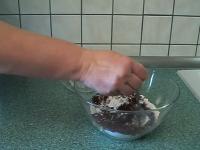Pain on the outside of the ankle
Pain in the ankle, especially on the outside, is a common problem. The joint is exposed to heavy loads and permanent incorrect or overloading can lead to acute or chronic pain.
Where can pain on the outside of the ankle come from?
To anticipate it, Pains on the outside of the ankle can have many causes. It can be an overload that can occur, for example, with sports such as running, tennis, squash or jumping.
skin, Muscles and bones at the ankle have little “cushion” and are fragile. This means that even a light blow against it can cause pain.
However, there are also typical symptoms of pain in the outer ankle injuriesthat can result from twisting. This is mostly about ligament strains or torn ligaments. But it can also broken bones develop.
It can also be one inflammation of the tendons of the short and long calf muscle (peroneal tendon syndrome). This muscle strand is on the lateral lower leg and leads around the lateral malleolus to then end at the metatarsal bone. These muscle bundles stabilize the arch of the foot. If these muscles are overloaded, the pain is felt mainly when lifting the inside of the foot. In chronic cases, the pain also occurs at rest.
A typical source of pain at the lateral malleolus is one lateral ligament injury of the foot. The foot bends inwards, so that the ligaments on the outside of the ankle are overstretched (distortion trauma). This can happen during sports, but also in everyday life when you wear high heels or slip on stairs. In the worst case, these ligaments can tear completely. In that case, you can no longer put your foot down or move it because you have lost control.
Not only can a sprained ligament be painful, it also requires the ankle to be stretched long enough...
One is also possible bone chipping at the ankle, this is due to the severity of the accident and the substance of the bones.
In older people or competitive athletes is a arthrosis, i.e. joint wear and tear, often the reason for pain in the ankle.
Other symptoms can appear in addition to the pain:
- swelling of the surrounding tissue
- Bruising caused by bleeding into the tissue
- Pain when walking or limitations in mobility
- the feeling of instability when walking
- oblique position of the foot and a change in the gait pattern
How to treat a sore ankle
If you have a twisted foot, it is recommended to use the foot for first aid after the LUCK rule to supply:
- Rest – stop moving immediately and sit down
- Ice - cools the joint, may minimize swelling
- Compression – tighten up Association apply to minimize bleeding into the surrounding tissue
- Elevation - elevate the foot so that the bleeding does not sink into the foot
If you feel your foot isn't healing on its own, see a doctor.
If necessary, an X-ray will be taken there in order to be able to detect any bone chipping. It may also be necessary to MRI Conduct an examination to identify possible tears in the ligament structures. In most cases, however, this is not possible immediately after the accident, since the swelling first has to go down.
You are usually given a firm bandage, possibly with an additional splint, to allow the strained ligaments to heal. Pain ointment is often also applied and/or painkillers prescribed.
In the case of chronic pain, the orthopedist will identify the causes, such as joint wear and tear, and develop a therapy. Surgery may also be necessary. However, this can only be decided by the doctor treating you.
If you have pain in the outer ankle, you should definitely make an appointment with an orthopedist. Because pain always means that something is wrong. The only question here is whether the appointment is acutely urgent or whether you have some time for a detailed examination and advice in the case of chronic conditions.


